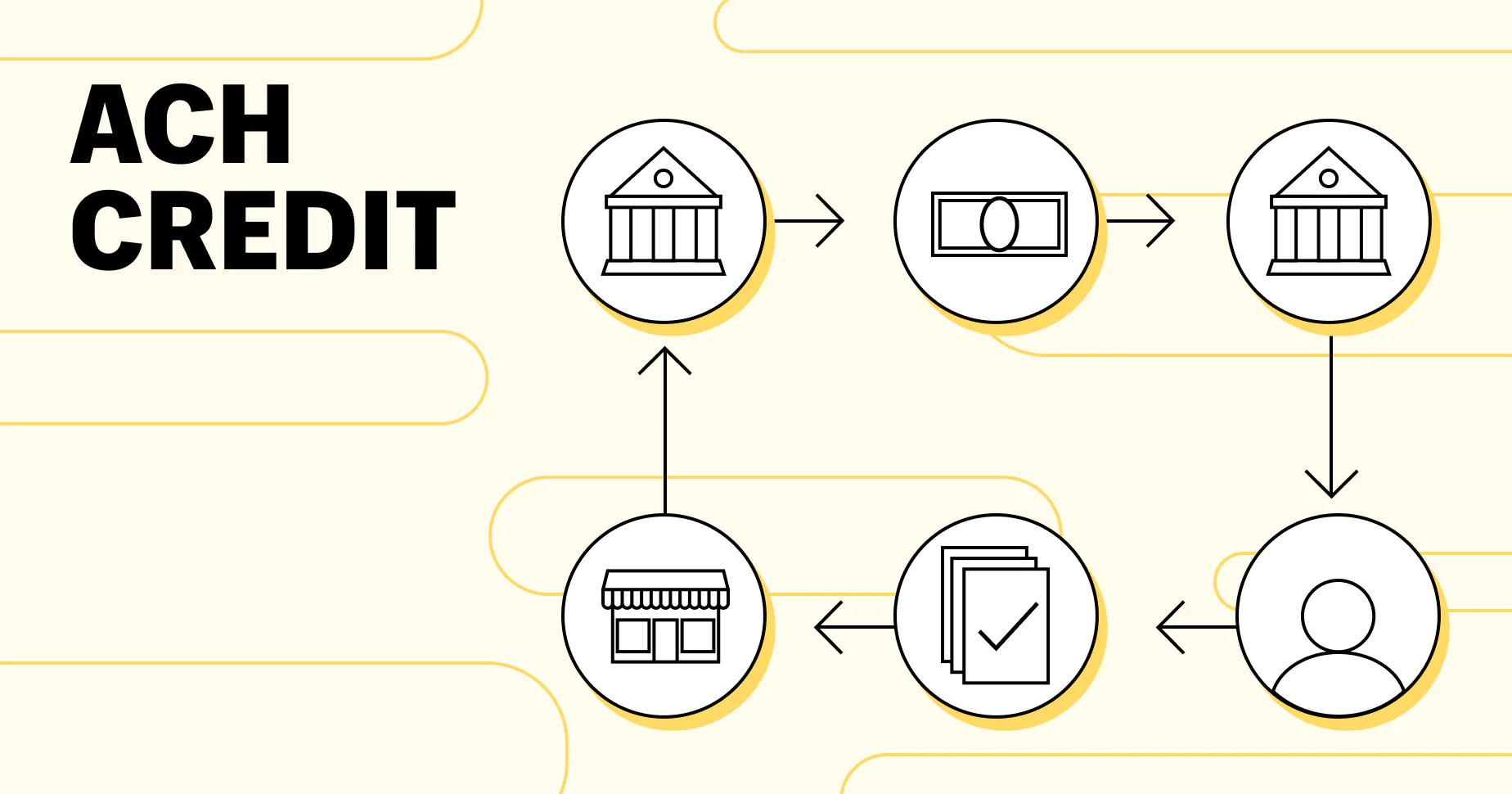Introduction
When it comes to banking, there are numerous acronyms and terms that can sometimes be confusing. One such acronym is IAT, which stands for International ACH Transaction. For those unfamiliar with the term, it raises questions about what IAT really means and its significance in the banking industry.
IAT refers to a method of transferring funds between bank accounts that are located in different countries. It plays a crucial role in facilitating international transactions and has become an integral part of modern banking operations. Understanding how IAT works and its importance can provide valuable insights into the global financial ecosystem.
In this article, we will delve into the intricacies of IAT, exploring its functionality, benefits, challenges, and considerations in the banking sector. By the end, readers will have a comprehensive understanding of what IAT stands for and how it impacts the world of banking.
So, let’s dive right in and unravel the mysteries behind IAT, shedding light on its role in facilitating international financial transactions and streamlining banking operations.
What is IAT?
IAT, or International ACH Transaction, is a mechanism that enables the transfer of funds between bank accounts located in different countries. It relies on the Automated Clearing House (ACH) network to facilitate these cross-border transactions. This electronic payment system allows for the secure and efficient movement of funds, providing a cost-effective alternative to traditional wire transfers.
Unlike wire transfers, which are mainly used for urgent and high-value transactions, IAT transactions are typically utilized for less time-sensitive payments, such as recurring bill payments, direct deposits, and international vendor payments. With advancements in technology, IAT has become increasingly popular due to its convenience and affordability.
When initiating an IAT, the sender provides the necessary information, including the recipient’s bank details and the reason for the payment. The funds are then transferred through the ACH network, which acts as an intermediary, verifying the sender’s account balance and delivering the funds to the recipient’s bank account.
It is important to note that IAT transactions must comply with specific regulatory requirements, such as anti-money laundering (AML) and Know Your Customer (KYC) regulations. These measures ensure the secure and legitimate movement of funds across borders, mitigating the risk of fraudulent activities.
Overall, IAT is a vital component of the global banking system, enabling individuals and businesses to conduct cross-border transactions efficiently and securely. Its usage has expanded over the years, with financial institutions embracing this technology to meet the evolving needs of their customers in the rapidly evolving global marketplace.
How does IAT work in banking?
IAT transactions in banking follow a well-defined process to ensure seamless and secure cross-border fund transfers. Let’s take a closer look at how IAT works:
- Initiation: The IAT process begins when the sender, whether an individual or a business, decides to initiate an international payment. They provide the necessary information, including the recipient’s banking details and the purpose of the transaction.
- Sender’s Bank: The sender’s bank acts as the initiating financial institution. They validate the sender’s account information, verify the availability of sufficient funds, and initiate the IAT transaction. This involves preparing and transmitting a specially formatted ACH file containing the relevant payment details.
- ACH Network: The ACH network serves as a facilitator for the IAT transaction. It receives the ACH file from the sender’s bank and processes it accordingly. The ACH network ensures the compliance of the transaction with regulatory requirements, such as AML and KYC regulations. It also validates the recipient’s bank details.
- Recipient’s Bank: Once the ACH network verifies and approves the IAT transaction, it forwards the funds to the recipient’s bank, also known as the receiving financial institution. The recipient’s bank credits the funds to the intended account after confirming the authenticity of the transaction.
- Recipient: The recipient of the IAT transaction, whether an individual or a business, can access the funds in their bank account according to their bank’s policies and procedures. They can utilize the funds for various purposes, such as paying bills, making purchases, or transferring the funds to another account if needed.
Throughout the entire process, the financial institutions involved in the IAT transaction prioritize security, accuracy, and compliance with international regulations. They employ robust security measures to protect sensitive information and ensure the integrity of the funds being transferred.
In summary, IAT in banking involves the initiation of an international payment by the sender’s bank, the transmission of payment details through the ACH network, verification and approval by the recipient’s bank, and the successful crediting of funds to the recipient’s account. This streamlined process allows for efficient cross-border transactions and facilitates global financial interactions.
Importance of IAT in banking operations
IAT plays a pivotal role in modern banking operations by facilitating international transactions and offering several key benefits to both financial institutions and their customers. Let’s explore the importance of IAT in banking:
1. Global Reach: With the increasing globalization of businesses and individuals, the ability to conduct cross-border transactions is essential. IAT allows banks to extend their services beyond national borders, enabling customers to send and receive funds internationally with ease.
2. Cost-Effectiveness: Compared to traditional wire transfers, IAT is a cost-effective solution for international payments. It often incurs lower fees, reducing the financial burden on customers and encouraging more frequent and accessible cross-border transactions.
3. Speed and Efficiency: IAT transactions are generally quicker than traditional methods, such as physical check processing. The streamlined electronic process enables funds to be transferred efficiently, ensuring prompt delivery to recipients in different countries.
4. Simplified Payment Process: IAT simplifies the payment process for individuals and businesses. Instead of navigating complex international banking procedures, customers can use their familiar local banking systems to initiate and track cross-border payments conveniently.
5. Enhanced Security: IAT transactions adhere to stringent security measures and regulatory requirements. Banks employ robust encryption and authentication protocols to protect sensitive financial information, ensuring the safety and integrity of the transferred funds.
6. Improved Cash Flow Management: For businesses operating in multiple countries, IAT provides better cash flow management capabilities. It allows them to receive payments from international customers efficiently, supporting effective financial planning and reducing payment delays.
7. Accessibility and Convenience: As digital banking continues to rise, IAT offers customers the convenience of initiating international payments from anywhere at any time. It empowers individuals and businesses to conduct global financial transactions without limitations imposed by physical proximity.
8. Compliance with Regulations: IAT transactions adhere to international regulations, including anti-money laundering (AML) and Know Your Customer (KYC) requirements. Financial institutions must ensure that IAT transactions comply with these regulations, reducing the risks of fraudulent activities and unauthorized funds transfer.
In summary, IAT is of significant importance in banking operations, enabling global reach, cost-effectiveness, speed, security, convenience, and regulatory compliance. As the world becomes more interconnected, IAT continues to play a crucial role in fostering seamless international financial interactions and expanding opportunities for businesses and individuals alike.
Benefits of IAT for Banks and Customers
IAT, or International ACH Transaction, offers numerous benefits for both banks and their customers. Let’s explore how IAT contributes to the efficiency and convenience of international transactions:
1. Increased Revenue: For banks, IAT presents an opportunity to generate additional revenue. By offering international payment services, banks can attract more customers, retain existing ones, and earn fees from cross-border transactions, boosting their overall profitability.
2. Expanded Customer Base: Banks that provide IAT services can attract new customers, particularly those engaged in global business activities. By offering reliable and cost-effective cross-border payment solutions, banks can position themselves as a preferred choice for customers seeking international banking services.
3. Cost Savings: IAT allows banks to reduce costs associated with international transactions. The use of electronic transfers instead of physical checks or wire transfers lowers operational expenses, such as postage, transportation, and handling fees, resulting in considerable cost savings for banks.
4. Faster Payments: IAT enables faster and more efficient international payments, benefiting both banks and customers. By using electronic systems and automated processes, funds can be transferred and credited to the recipient’s account more swiftly, reducing processing time and enhancing overall customer satisfaction.
5. Improved Customer Experience: IAT enhances the customer experience by offering a seamless and simplified international payment process. This includes easy initiation of payments, quick transfer of funds, real-time tracking of transactions, and the ability to access international banking services through digital channels.
6. Risk Reduction: IAT transactions undergo rigorous security measures and compliance checks, reducing the risk of fraud and unauthorized access. Banks can leverage advanced technology and encryption methods to protect customer information and maintain the integrity of cross-border transactions.
7. Regulatory Compliance: IAT ensures compliance with international regulations, including anti-money laundering (AML) and Know Your Customer (KYC) requirements. Banks can streamline their compliance procedures and mitigate the risk of potential penalties or reputational damage associated with non-compliance.
8. Enhanced Financial Planning: IAT enables better financial planning and cash flow management for both businesses and individuals. By facilitating quicker and more predictable international payments, customers can effectively manage their finances, make timely payments, and optimize their working capital.
In summary, IAT provides a wide range of benefits for banks and customers, including increased revenue, expanded customer base, cost savings, faster payments, improved customer experience, risk reduction, regulatory compliance, and enhanced financial planning. It is a valuable tool that enhances the efficiency and convenience of international transactions, empowering banks and customers in the global financial landscape.
Challenges and Considerations with IAT in Banking
While International ACH Transaction (IAT) offers numerous benefits to the banking industry, there are also several challenges and considerations that must be taken into account. Let’s explore some of the key challenges and considerations associated with IAT in banking:
1. Compliance Complexity: Banks have the responsibility to ensure compliance with complex regulatory frameworks across different countries. This includes adhering to anti-money laundering (AML) and Know Your Customer (KYC) requirements, as well as staying updated with changing international banking regulations.
2. Regulatory Variations: Different countries have their own rules and regulations regarding international transactions. Banks must navigate these variations, ensuring they comply with the specific requirements of each country involved in the IAT process. This can create additional administrative overhead and challenges for banks operating in multiple jurisdictions.
3. Currency Conversion: In cases where the sender and recipient hold accounts in different currencies, currency conversion becomes a crucial consideration. Banks must handle the conversion process accurately and transparently, factoring in exchange rates and potential fees, to ensure fair and efficient currency conversions for customers.
4. Foreign Exchange Risk: As currency exchange rates can fluctuate, there’s a potential risk for banks and customers when converting funds between currencies. Banks need to monitor and manage foreign exchange risk effectively to minimize potential losses and provide customers with competitive exchange rates.
5. Technical Integration: Implementing IAT requires technical integration between different banks and financial systems. Ensuring seamless communication and data exchange can be challenging, especially when dealing with diverse legacy systems and varying technology standards across different banking institutions.
6. Data Privacy and Security: International transactions involve the transfer of sensitive customer information across borders. Banks must prioritize data privacy and employ robust security measures to protect customer data from unauthorized access, ensuring compliance with data protection regulations in multiple jurisdictions.
7. Language and Cultural Differences: When dealing with international transactions, language and cultural differences can pose communication challenges. Banks must have processes in place to overcome language barriers and provide support to customers in their preferred language, as well as consider cultural nuances to deliver a personalized banking experience.
8. Customer Education: Many customers may be unfamiliar with the intricacies of international transactions and may require education and guidance to effectively utilize IAT services. Banks should invest in customer education initiatives, providing resources and support to help customers understand the process, fees, and regulatory requirements involved in cross-border transactions.
In summary, while IAT offers significant advantages, banks must navigate challenges related to compliance, regulatory variations, currency conversions, foreign exchange risks, technical integration, data privacy, language differences, and customer education. By addressing these considerations, banks can effectively leverage IAT to provide seamless international banking services to their customers.
Conclusion
IAT, or International ACH Transaction, plays a crucial role in modern banking operations, offering a seamless and efficient means of transferring funds between bank accounts in different countries. Throughout this article, we have explored the intricacies of IAT, its functionality, benefits, challenges, and considerations in the banking industry.
With IAT, banks can expand their global reach, attract new customers, and generate additional revenue. It provides cost-effective and faster international payment solutions, enhancing the overall customer experience. The secure and compliant nature of IAT ensures the integrity of cross-border transactions while adhering to international regulations.
However, challenges such as compliance complexity, regulatory variations, currency conversions, technical integration, data privacy, language differences, and customer education should be carefully considered and addressed by banks offering IAT services.
In the ever-evolving global financial landscape, IAT continues to play a pivotal role in facilitating global financial interactions and expanding opportunities for businesses and individuals alike. By embracing IAT and navigating its challenges, banks can position themselves as leaders in international banking services, providing their customers with seamless, secure, and convenient cross-border transactions.
As technology advances and the demand for global banking services grows, the significance of IAT is only expected to increase. By continuously adapting to changing market dynamics and leveraging innovative solutions, banks can ensure the continued success and growth of their international banking operations.

























